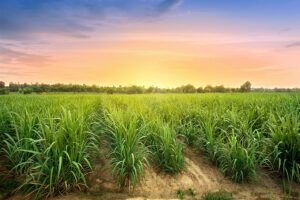Global biofuel acreage amounted to 6% of total area farmed

The largest share was used directly or indirectly, via livestock feeds, for human nutrition. Only around 6% of the area was used to produce biofuels.
Biofuel production was located in places where there is a surplus of feedstock - mainly maize, palm oil and soybean oil.
If the option of using the surplus to produce biofuels did not exist, it would have to be placed on the global market, where it would weigh heavily on feedstock costs.
The conversion of agricultural feedstock to biofuels reduces the production overhang, generates extra value added and reduces the need for foreign currency for imports of crude oil or fossil fuels. The latter is primarily a problem in poorer countries.
Another advantage of biofuel production is that it also yields high-quality protein feedstuffs, which are in high demand.
The share and quality of these protein feeds have a strong influence on commodity prices and consequently on the size of the area planted.
his applies especially to soybeans. Biofuels are by no means the price drivers in the commodities markets.
In an emergency situation, the feedstocks required in biofuel production will be available for food supply (for example, rapeseed/sunflowerseed oil during the Ukraine crisis).
If arable farming were to be intensified for political reasons – an aim the EU Commission is pursuing with the reduction strategy for fertilisers and plant protection products under the Green Deal – this option of "buffering" food demand would no longer be available.











